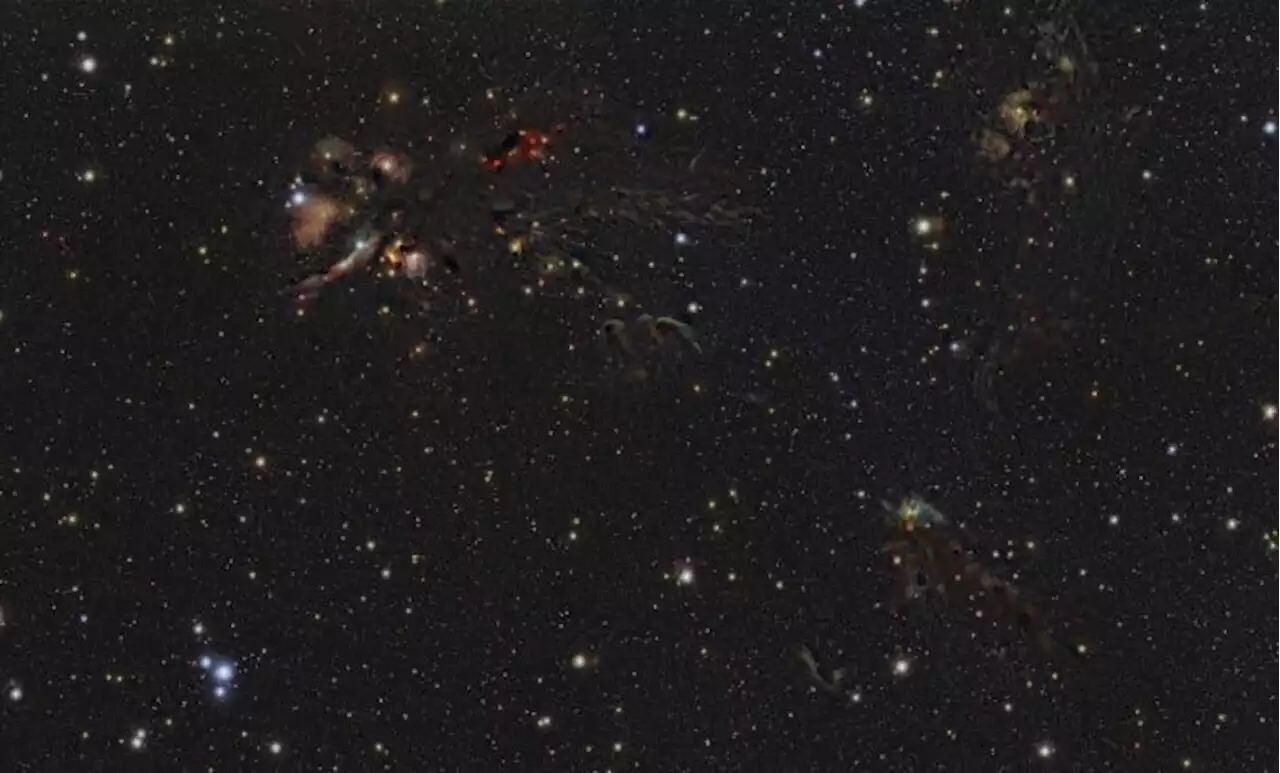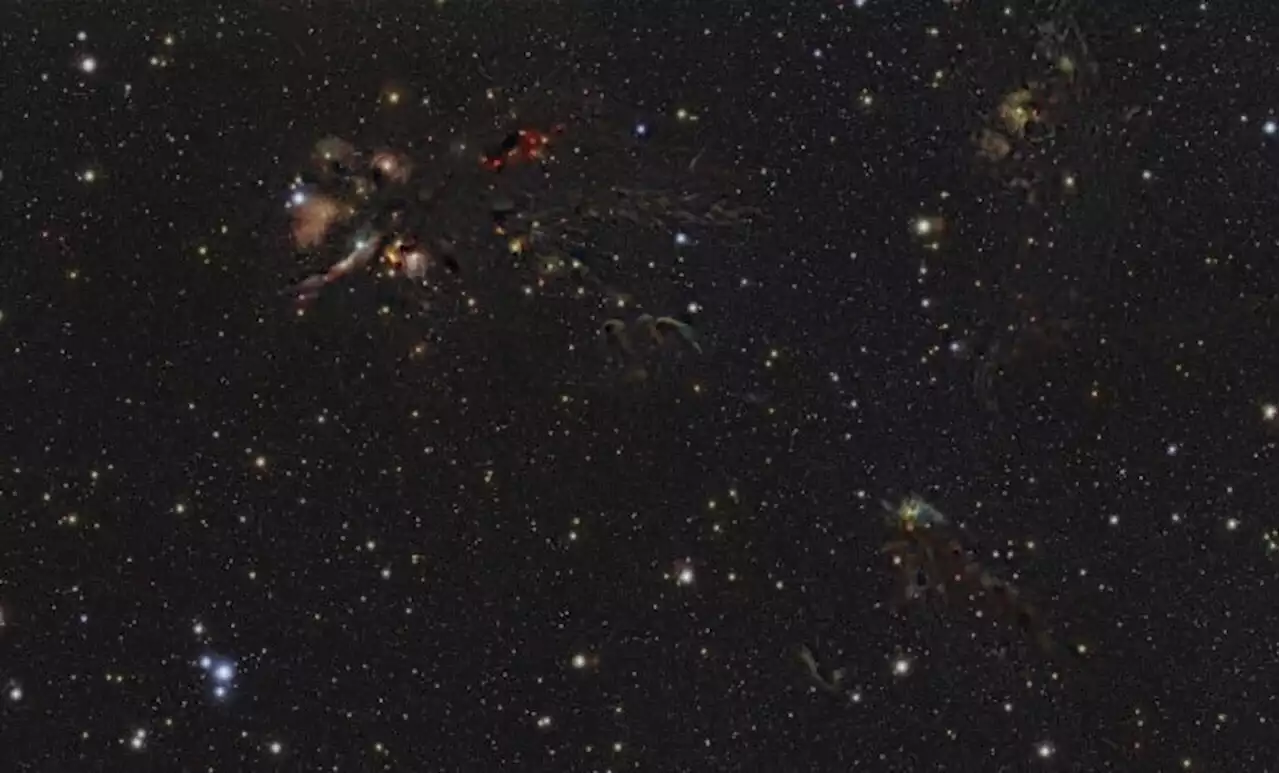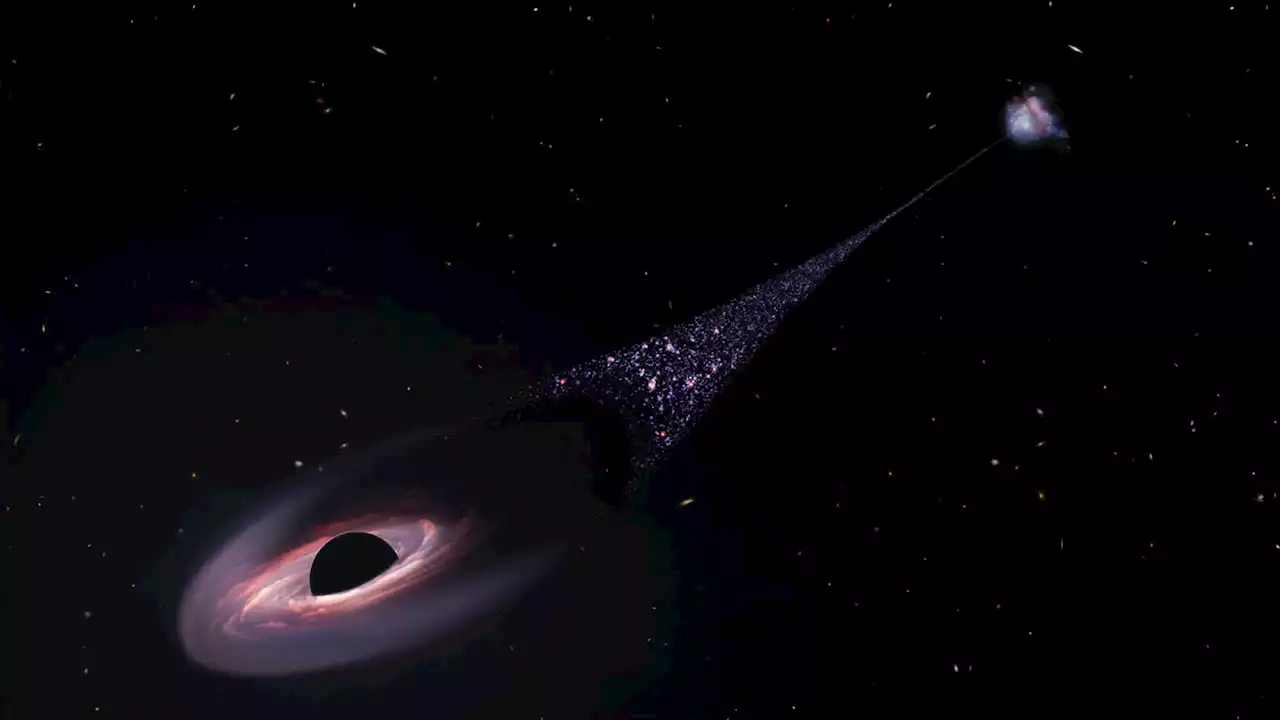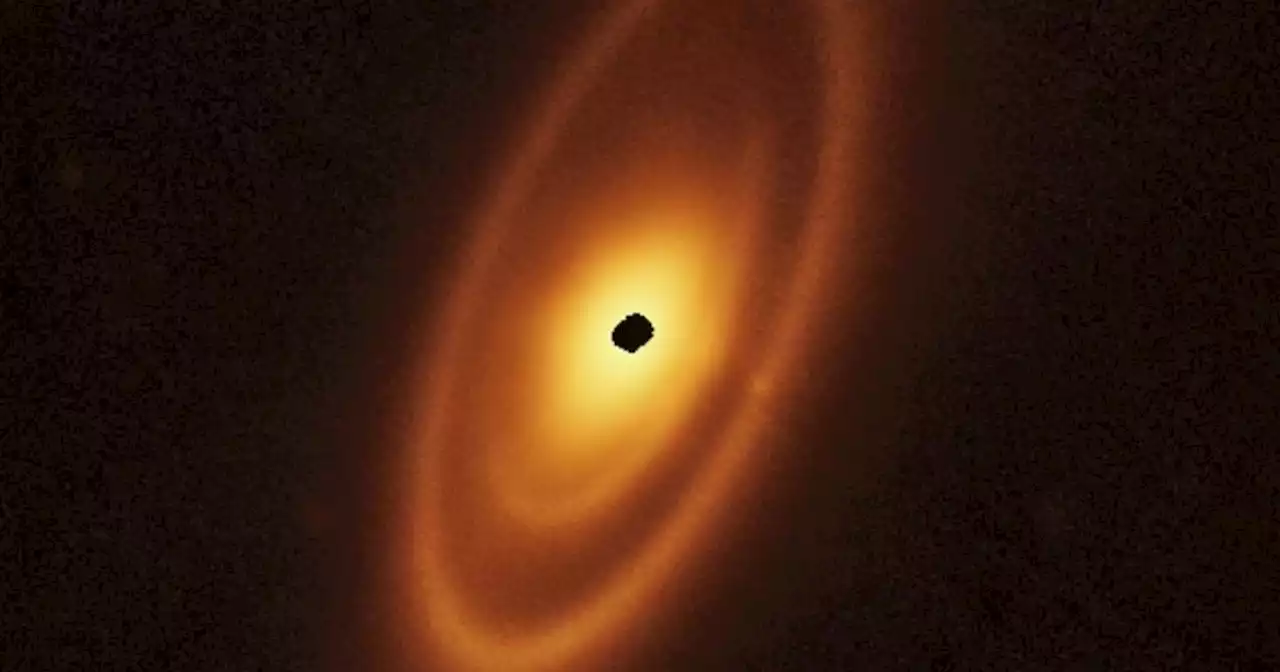The most powerful explosion ever seen seems to come from a supermassive black hole devouring a colossal cloud of gas, blasting out enormous amounts of energy as it eats
In the distant universe, a supermassive black hole seems to be devouring an enormous cloud of gas, producing an
the likes of which we’ve never seen before. So far, it has released about 100 times the total energy the sun will release in its entire lifetime, and it hasn’t finished yet. This gigantic inferno, called AT20211wx, was first spotted in 2020 by the Zwicky Transient Facility in California.at the University of Southampton in the UK and his colleagues performed a series of follow-up observations with other observatories in the years since then. “We see various different large explosions and flashes in the universe, but nothing anywhere near what we see here,” Wiseman says.
The only cosmic objects brighter than AT20211wx are quasars, which are caused by a continuous flow of gas into a. This explosion, which brightened by a factor of more than 15 over the course of about four months and then began to steadily dim, is still ongoing. The observations seem to point to a supermassive black hole devouring a gargantuan cloud of gas, possibly 100 times larger than the solar system or even bigger.
Brasil Últimas Notícias, Brasil Manchetes
Similar News:Você também pode ler notícias semelhantes a esta que coletamos de outras fontes de notícias.
 Stunning mosaic of baby star clusters created from 1 million telescope shotsAstronomers have created a stunning mosaic of baby star clusters hiding in our galactic backyard! ✨💫
Stunning mosaic of baby star clusters created from 1 million telescope shotsAstronomers have created a stunning mosaic of baby star clusters hiding in our galactic backyard! ✨💫
Consulte Mais informação »
 Stunning mosaic of baby star clusters created from 1 million telescope shotsAstronomers have created a stunning mosaic of baby star clusters hiding in our galactic backyard.🌠💫🤩mosaic stars space astronomy kprc2 click2hou
Stunning mosaic of baby star clusters created from 1 million telescope shotsAstronomers have created a stunning mosaic of baby star clusters hiding in our galactic backyard.🌠💫🤩mosaic stars space astronomy kprc2 click2hou
Consulte Mais informação »
 Galactic Mistake? Astronomers May Have Solved the Mystery of the Runaway Supermassive Black HoleA study carried out by a team of researchers at the Instituto de Astrofísica de Canarias (IAC) has shown that an unusually thin structure of stars, recently discovered by the Hubble Space Telescope, could be a galaxy seen edge-on. This finding goes against the original interpretation in which a flee
Galactic Mistake? Astronomers May Have Solved the Mystery of the Runaway Supermassive Black HoleA study carried out by a team of researchers at the Instituto de Astrofísica de Canarias (IAC) has shown that an unusually thin structure of stars, recently discovered by the Hubble Space Telescope, could be a galaxy seen edge-on. This finding goes against the original interpretation in which a flee
Consulte Mais informação »
 Boom! Astronomers just watched the largest explosion in space rage for 3 yearsThe blast lasted for three years and is over ten times as powerful as the brightest supernova .
Boom! Astronomers just watched the largest explosion in space rage for 3 yearsThe blast lasted for three years and is over ten times as powerful as the brightest supernova .
Consulte Mais informação »
 James Webb gets stunning view of a far-off planetary system | Digital TrendsAs well peering back at the earliest galaxies in the universe, the James Webb Space Telescope is also letting astronomers learn more about how planets form.
James Webb gets stunning view of a far-off planetary system | Digital TrendsAs well peering back at the earliest galaxies in the universe, the James Webb Space Telescope is also letting astronomers learn more about how planets form.
Consulte Mais informação »
